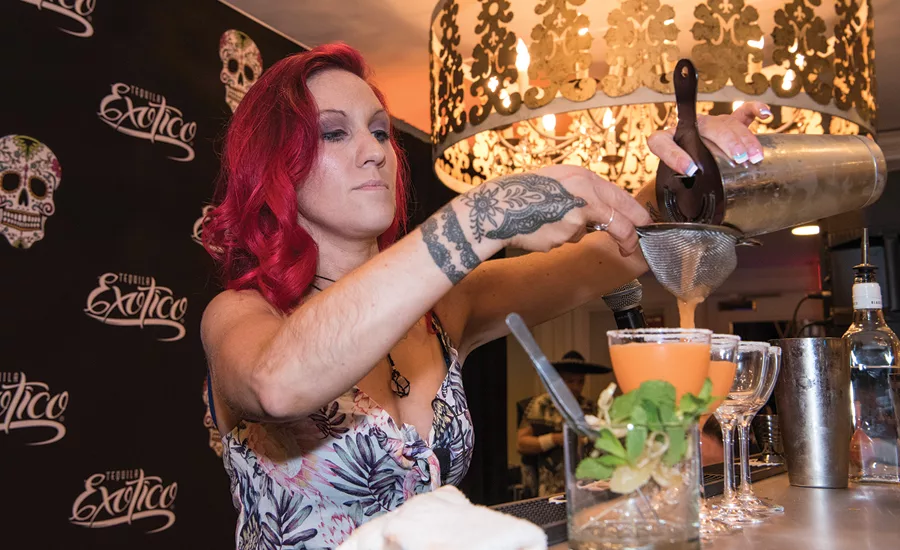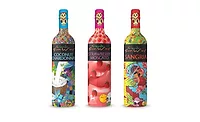On-trend cocktails drive sales on-premise
Cocktail competitions, chatbots fuel innovation with mixologists, consumers

On foodservice menus, there are many timeless cocktails, including gin and tonics, Moscow mules, Margaritas, and daiquiris, to name a few. The quest to perfect and expand on traditional offerings continues to evolve as witnessed by national cocktail competitions, happy hours and step-by-step recipes on websites and cocktail chatbots, which are furthering consumers’ fascination and enjoyment of cocktails at home and on-premise.
Festive cocktails and mocktails on-premise not only spark consumer interest, but also boost beverage sales particularly for younger consumers who want something new and different and aren’t as loyal to one particular spirit or brand, says Eric Schmidt, director of alcohol research at New York-based Beverage Marketing Corporation (BMC).
“Cocktails have definitely boosted sales on-premise,” Schmidt says. “Over the last three years, sales in bars and restaurants have grown an average of 0.5 percent on a volume basis and 2.5 percent on a dollar basis,” Schmidt says.
Both classic cocktails and voguish cocktails featuring trendy spirits and different ingredients are working in unison, he adds.
“The growth and popularity of brown spirits has spurred a resurgence of classic cocktails like the Manhattan, old fashioned, Sazerac and whiskey sour,” Schmidt says. “Although other classic cocktails outside of brown spirits have seen a renaissance, like the Moscow mule and Negroni.”
Many consumers prefer distilled spirits versus beer and wine, according to a statement from the Washington, D.C.-based Distilled Spirits Council, citing a poll conducted by Morning Consult which surveyed more than 2,000 legal-drinking-age adults.
The poll found that 39 percent of consumers prefer distilled spirits, either in a cocktail or straight, 32 percent prefer beer, and 25 percent prefer wine. Additionally, 50 percent of those surveyed said they would choose cocktails or straight liquor over beer or wine.
“Adult consumers, particularly millennials of legal drinking age, continue to gravitate toward the vast array of spirits products as companies create excitement in the marketplace with new products and experiences,” said David Ozgo, Distilled Spirit’s chief economist, in a statement.
Chris Luzar, principal at Cincinnati-based Frohman & Associates, also points to this trend and notes that the definition of cocktail is evolving.
“The rising stars in the playbook of cocktails is based on new spirits (many local and small-batch) and inclusion on non-traditional ingredients such as herbs and fruits,” Luzar says. “These original and interesting combinations are chilled over multiple ice forms, pebble, cube, etc., and served in iconic glass styles.
“Savvy operators realize their customers, particularly millennials, expect more from the bartender than opening a beer and pouring shots,” she continues. “What consumers are demanding are drinks they have never tried before and [they] expect the bartender to guide their new beverage experiences. They want a more transformative, ‘adventurous’ cocktail experience.”
To drive innovation, many spirits companies are hosting national cocktail competitions, which continue to fuel interest in unique cocktails. With her cocktail, “The Spaisi Ginger,” mixologist Tara Jagodzinski beat out seven finalists and 56 contestants overall to take the Grand Prize at The USBG “Make it Exotico” Cocktail Competition at the Tales of the Cocktail in New Orleans. In addition to bragging rights, the Detroit-based mixologist received an all-expense paid trip to Exotico Tequila’s distillery in Jalisco, Mexico.
Chatbots fuel engagement
In the age of mobile technology, several liquor brands, including Tito’s Handmade Vodka, have developed chatbots to interact with their intelligence-powered program that functions like a virtual bartender. The partnership ensures that Facebook Messenger users can find drink recommendations and recipes, then click-to-purchase Tito’s from liquor deliver service Drixly, the company says.
The global chatbot market is forecasted to grow by 24.4 percent during the next four years, with self-service apps driving adoption, according to a report by Research and Markets.
To stay top of mind and engage consumers, bars and restaurants are offering specialty craft cocktails, drink specials, happy hours and specialty menus paring food with drinks to drive sales, BMC’s Schmidt says.
Although recipes for many cocktails remain constant, the amount of alcohol does not. “Cocktails, like the Long Island Iced Tea, contain five different spirits and an [alcohol-by-volume] (ABV) content of around 80 percent while a typical whiskey and soda contains just over 15 percent alcohol,” Schmidt explains.
Raise the bar
Frohman & Associate’s Luzar notes that efficiency when making more complex cocktails on-premise might be optimized by the design of a well-designed cocktail station to “raise the bar” in revenue.
“Leading [bar] operators are convinced that an efficient bar design includes professional mixing stations, investment in glass rinsers, consideration of the size of ice rails, and precise location of tool wells and cheater bottles,” she says. It also can increase bar revenue by up to 25 percent, she adds.
Health-and-wellness trends also are impacting how cocktails are made with more locations choosing fresh ingredients over ready-to-use mixes and juices, Schmidt says.
Simplification also is key. “If suppliers want consumers to replicate cocktails at home for consumption, too much complexity doesn’t bode well,” he says. “As overall spirits growth slows, innovation will continue in the cocktail segment as the industry tries to keep consumers engaged by using different ingredients, rather than existing recipes.” BI
Looking for a reprint of this article?
From high-res PDFs to custom plaques, order your copy today!



